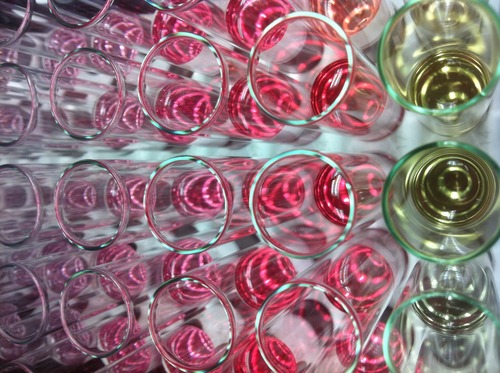|
Art of Science 2013 Online Gallery
«Prev |
Thumbnails |
Next »
|
 Tropical sunset
Anna Hiszpanski (graduate student) and Yueh-Lin Loo (faculty)
Department of Chemical and Biological Engineering
When attempting to synthesize a desired chemical, some starting materials may not react as anticipated or may produce undesired byproducts. Hence, chemists must typically perform separations to isolate the desired product from other chemicals in the reaction mixture. If the desired products and the undesirable byproducts have similar solubilities, it may be necessary to perform a chromatographic separation. In such a case, the reaction solution is passed through a packed column of small silica beads. Each component of the solution will move at a different speed through the column, isolating the desired product. If the components in the mixture absorb at different wavelengths in the visible light spectrum, chromatographic separation can produce colorful gradients, as seen in the image. Here we were synthesizing a semiconducting molecule called hexabenzocoronene for use in organic electronic applications.
|
|